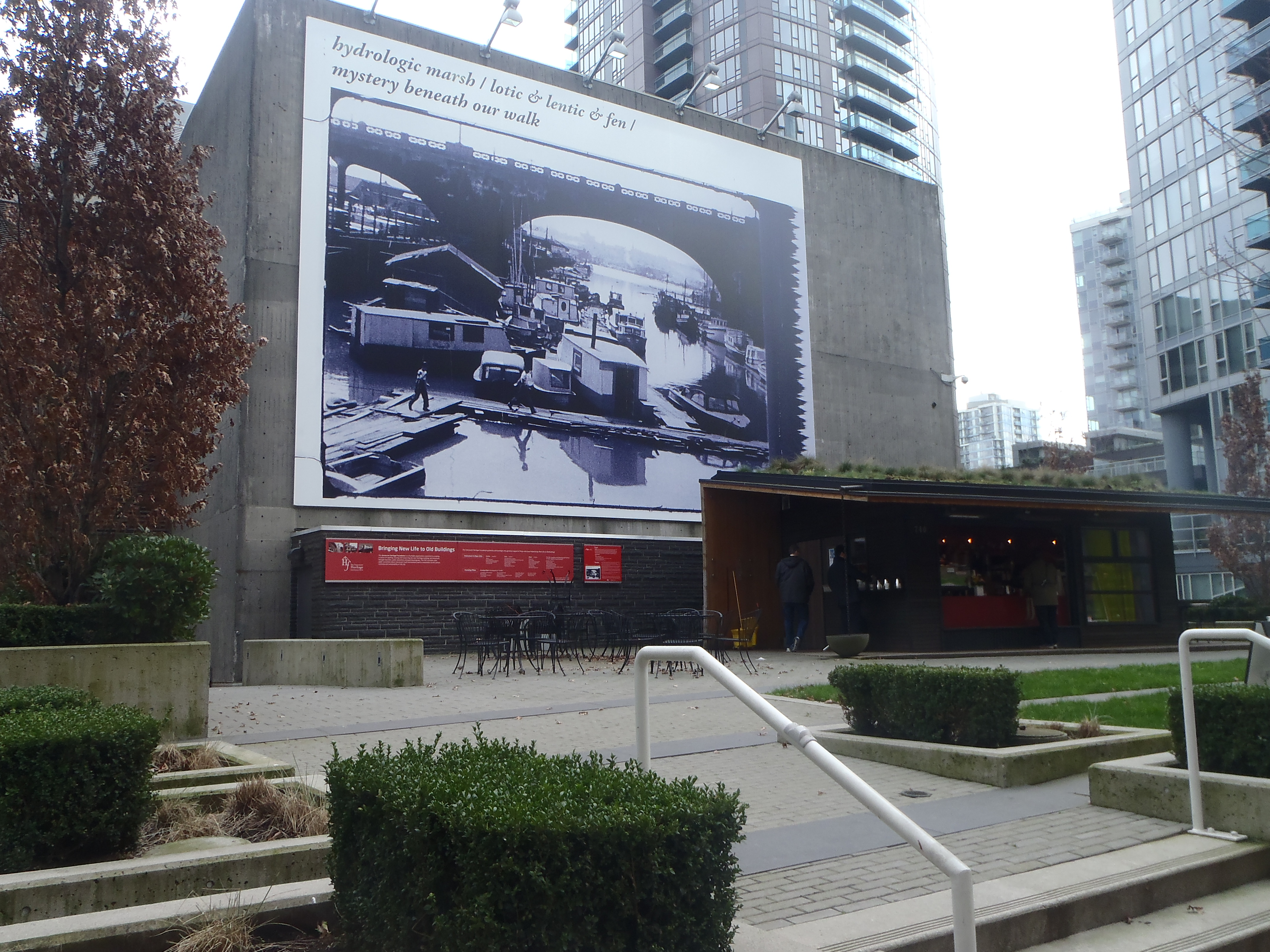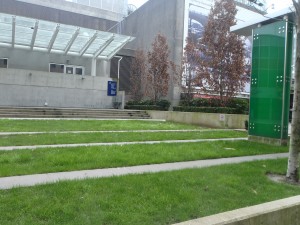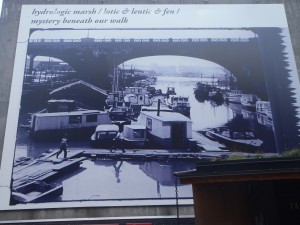Laiwan’s “Fountain”: Analysing the Fluidity of Time by Andrei Rizea
Laiwan’s art exhibit located at The Wall at CBC Plaza (700 Hamilton Street, Vancouver) titled Fountain: the source of origin of anything, depicts “a frame from the 16mm film Summer Afternoon (1956), [bringing] to stillness the wandering adventures of two children near Keefer and Columbia Streets, along the waters of False Creek and next to the Old Georgia Viaduct, which has since been filled in as land” (Low).
The aim of this arts review is to explore the notion of time and its elastic properties through the continuous renewal and evolution of technological systems that have forever changed the art of examining history, or as Low mentions, “the metaphor of fluidity within the city’s built environment, visible and invisible.”
Upon first visit of the site, one becomes unaware and unsure of what exactly to look at:
The art piece becomes a part of the urban environment itself. It serves the dualisitc purpose of acting as a part of the urban fabric, mimicking a large advertisement in conversation with the next door cultural media hub of Vancouver’s CBC building, yet also acts as a separate entity meant to distinguish itself and respond to this urban realm.
More specifically, without any knowledge of the exhibition and site itself, a passer-by interprets the installation as a monument or heritage site meant to acknowledge the extensive history, in addition to the cultural, economic, political and social influences that the CBC has upon British Columbians and Canadians as a whole. This can be emphasised through the “the image’s grainy aesthetic, its inclusion of the film’s sprocket on the left edge and [the] jagged wave of audio signal on the right,” which all symbolise the gradual and fluid evolution of the mediums and parameters within which broadcasting companies operate (Low).
However, by contrast, this is where the theme of time, and more specifically, the fluidity of history, come into place. Upon closer inspection of the piece, through the dialectical comparison between the vintage 16mm film and the modern landscape, the viewer becomes engaged with the ‘the passing of time,’ where the past and future begin to occur at the same time despite the fact that history is conventionally viewed as being chronological and separable. Past generations that helped to build this city, and more specifically the Old Georgia Viaduct, become a part of the digitized world we live in.
This effect can be better interpreted through the contrast between tangible (i.e. a 16 mm roll of film) and intangible (digitized archival data) forms of historical representations. Time seems to freeze within one frame once it is taken out of it’s sequential series of events, and becomes even more isolated from it’s true source as it becomes part of a complex network of digital codes in an interminable realm of information. Laiwan attempts to ‘humunaize’ and reperesent this break in time and history by turing a digital copy of a film into a concrete material, once again becoming united with it’s past and essential meanings.
More specifically, this relationship between the ‘dehumanized’ product as a consequence of our technological advances, and the essential, harmonious and ‘natural’ identity of our past, becomes well portrayed through a juxtaposition of key terms. The term “hydrological,” which evokes a sense of a pre-fabricated part stripped bear of any emotional connotations, becomes juxtaposed with terms referencing an aquatic environment such as “lotic, lentic & fen,” meant to conjure up a natural, pure and picturesque tone. In effect, Lawain ties these two parallelisms with the symbolic importance of water: the still water not only connotes the ‘frozen time frame’ mentioned earlier, but is a direct representation of the past and future. The ‘present day’ landscape of the 1950’s becomes seamlessly reflected, as to evoke another side, truth or parallel history (such as that of the 21st Century), in accordance to how that specific time frame, and many more ‘reflective realities’ to come, can be interpreted.
Source:
Low, Joni. Fountain: the source or origin of anything. n.d. PDF file of a curatorial essay.


